
George Smith Patton Jr. was a general in the United States Army who commanded the Seventh Army in the Mediterranean Theater of World War II, and the Third Army in France and Germany after the Allied invasion of Normandy in June 1944.

George Grunert was a United States Army cavalry officer who worked his way up through the ranks from private to retirement as a lieutenant general. His 47-year career extended from the Spanish–American War to the end of World War II.

Omar Nelson Bradley was a senior officer of the United States Army during and after World War II, rising to the rank of General of the Army. He was the first chairman of the Joint Chiefs of Staff and oversaw the U.S. military's policy-making in the Korean War.

General Lucian King Truscott Jr. was a highly decorated senior United States Army officer, who saw distinguished active service during World War II. Between 1943–1945, he successively commanded the 3rd Infantry Division, VI Corps, Fifteenth Army and Fifth Army, serving mainly in the Mediterranean Theater of Operations (MTO) during his wartime service. He and Alexander Patch were the only U.S. Army officers to command a division, a corps, and a field army in combat during the war.
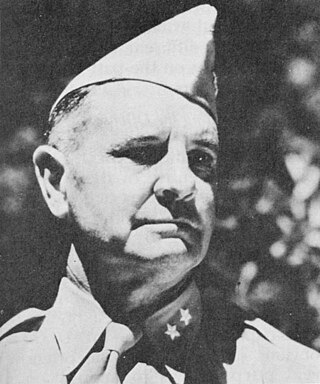
Geoffrey Keyes was a highly decorated senior United States Army officer who served with distinction in Sicily and Italy during World War II.

General Matthew Bunker Ridgway was a senior officer in the United States Army, who served as Supreme Allied Commander Europe (1952–1953) and the 19th Chief of Staff of the United States Army (1953–1955). Although he saw no combat service in World War I, he was intensively involved in World War II, where he was the first Commanding General (CG) of the 82nd "All American" Airborne Division, leading it in action in Sicily, Italy and Normandy, before taking command of the newly formed XVIII Airborne Corps in August 1944. He held the latter post until the end of the war in mid-1945, commanding the corps in the Battle of the Bulge, Operation Varsity and the Western Allied invasion of Germany.

General Walter Bedell "Beetle" Smith was a senior officer of the United States Army who served as General Dwight D. Eisenhower's chief of staff at Allied Forces Headquarters (AFHQ) during the Tunisia Campaign and the Allied invasion of Italy in 1943, during World War II. He was Eisenhower's chief of staff at the Supreme Headquarters Allied Expeditionary Force (SHAEF) in the campaign in Western Europe from 1944 to 1945.

Lieutenant General Lloyd Ralston Fredendall was a general officer of the United States Army who served during World War II. He is best known for his leadership failure during the Battle of Kasserine Pass, leading to one of America's worst defeats of World War II, for which he was relieved of his command.

Lieutenant General Frank Maxwell Andrews was a senior officer of the United States Army and one of the founders of the United States Army Air Forces, which was later to become the United States Air Force. In leadership positions within the Army Air Corps, he succeeded in advancing progress toward a separate and independent Air Force where predecessors and allies such as Billy Mitchell had failed. Andrews was the first head of a centralized American air force and the first air officer to serve on the Army's general staff. In early 1943, he took the place of General Dwight D. Eisenhower as commander of all U.S. troops in the European Theater of Operations.
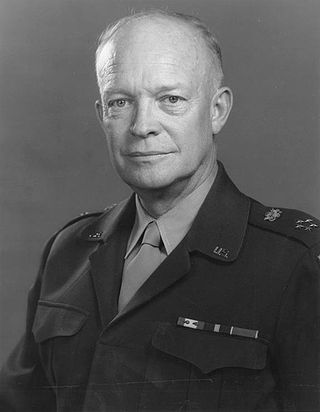
The military career of Dwight D. Eisenhower began in June 1911, when Eisenhower took the oath as a cadet at the United States Military Academy at West Point. He graduated from West Point and was commissioned as a second lieutenant in the United States Army in June 1915, as part of "the class the stars fell on". He rose through the ranks over the next thirty years and became one of the most important Allied generals of World War II, being promoted to General of the Army in 1944. Eisenhower retired from the military after winning the 1952 presidential election, though his rank as General of the Army was restored by an act of Congress in March 1961.
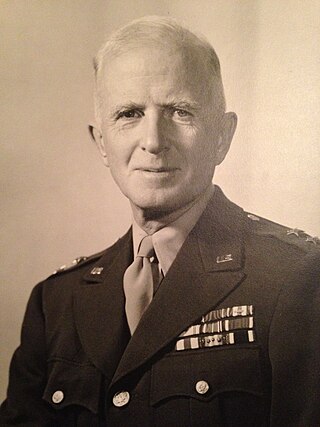
Major General Orlando Ward was a career United States Army officer who fought in both World War I and World War II. During the latter, as a major general, he commanded the 1st Armored Division during Operation Torch and during the first few months of the Tunisian campaign, before being relieved in March 1943. He trained and returned to Europe in 1945 as commander of the 20th Armored Division.

Lieutenant General Hobart Raymond Gay, nicknamed "Hap", was a United States Army officer who served in numerous conflicts, including World War II, where he worked closely alongside General George S. Patton, and later in the Korean War, where he commanded the 1st Cavalry Division.

Robert Charlwood Richardson Jr. was born in Charleston, South Carolina, on October 27, 1882, and was admitted as a cadet at the United States Military Academy on June 19, 1900. His military career spanned the first half of the 20th century. He was a veteran of the 1904 Philippine insurrection, World War I, and World War II. He commanded the U.S. Army, Pacific during the height of World War II in 1943 until his retirement in 1946. During that time he was also the military governor of Hawaii and Commanding General of U.S. Army Forces in the Pacific Ocean Areas.

Lieutenant General Willis Dale Crittenberger was a senior officer of the United States Army. He was a career soldier who served with distinction during the Italian campaign of World War II
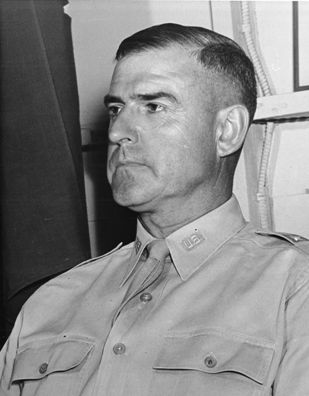
Major General Roscoe Barnett Woodruff was a career United States Army officer who fought in both World War I and World War II and served for 38 years. During World War II he commanded divisions and corps in Europe and the Pacific.
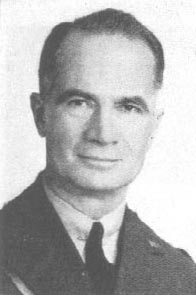
Major General Terry de la Mesa Allen Sr. was a senior United States Army officer who fought in both World War I and World War II. Allen was a decorated World War I veteran, where he commanded an infantry battalion at the relatively young age of 30 in 1918 and was wounded twice, and, after America's entry into World War II in late 1941, he commanded the 1st Infantry Division in North Africa and Sicily from May 1942 until August 1943. He was later selected to lead the 104th Infantry Division as divisional commander, a post he held until the war's end in 1945.
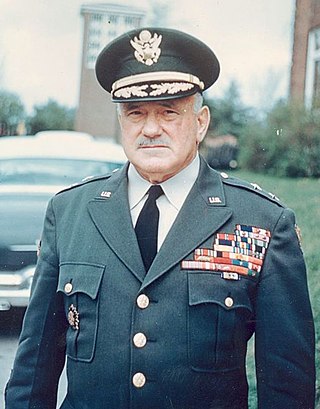
Major General Ernest Nason Harmon was a senior officer of the United States Army. He served in both World War I and World War II, and is best known for his actions in reorganizing the 1st Armored Division after the debacle in February 1943 at the Battle of Kasserine Pass during the Tunisian campaign.
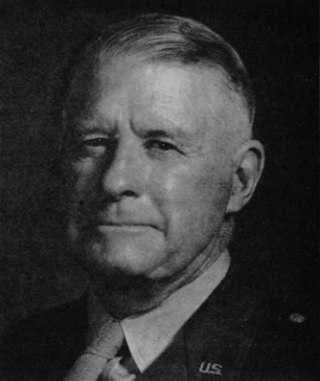
Innis Palmer Swift was a Major General in the United States Army. He was the grandson and namesake of Civil War Major General Innis Newton Palmer, as well as the grandson of Brigadier General Ebenezer Swift. His four decades of military service culminated in his commanding a unit during the liberation of the Philippines in World War II.

In early August 1943, Lieutenant General George S. Patton slapped two United States Army soldiers under his command during the Sicily Campaign of World War II. Patton's hard-driving personality and lack of belief in the medical condition of combat stress reaction, then known as "battle fatigue" or "shell shock", led to the soldiers' becoming the subject of his ire in incidents on August 3 and 10, when Patton struck and berated them after discovering they were patients at evacuation hospitals away from the front lines without apparent physical injuries.
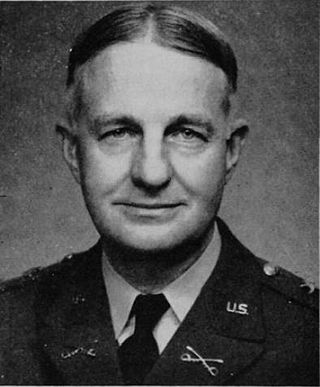
John Knowles Herr was a career American soldier. Herr served for 40 years in the United States Cavalry and participated in the final battles of World War I as chief of staff of the 30th Division, but is best remembered for being the last Chief of U.S. Cavalry. In March 1938 Major General Herr was appointed Chief of Cavalry and became a fierce advocate of traditional horse cavalry troops. He defended cavalry as an independent branch of service and opposed conversion of mounted troops into mechanized or armored units. Herr's affection to horse, "somewhat quixotic" for the period, temporarily made him "a hero and a standard bearer" to generations of officers indoctrinated in cavalry tactics.




















